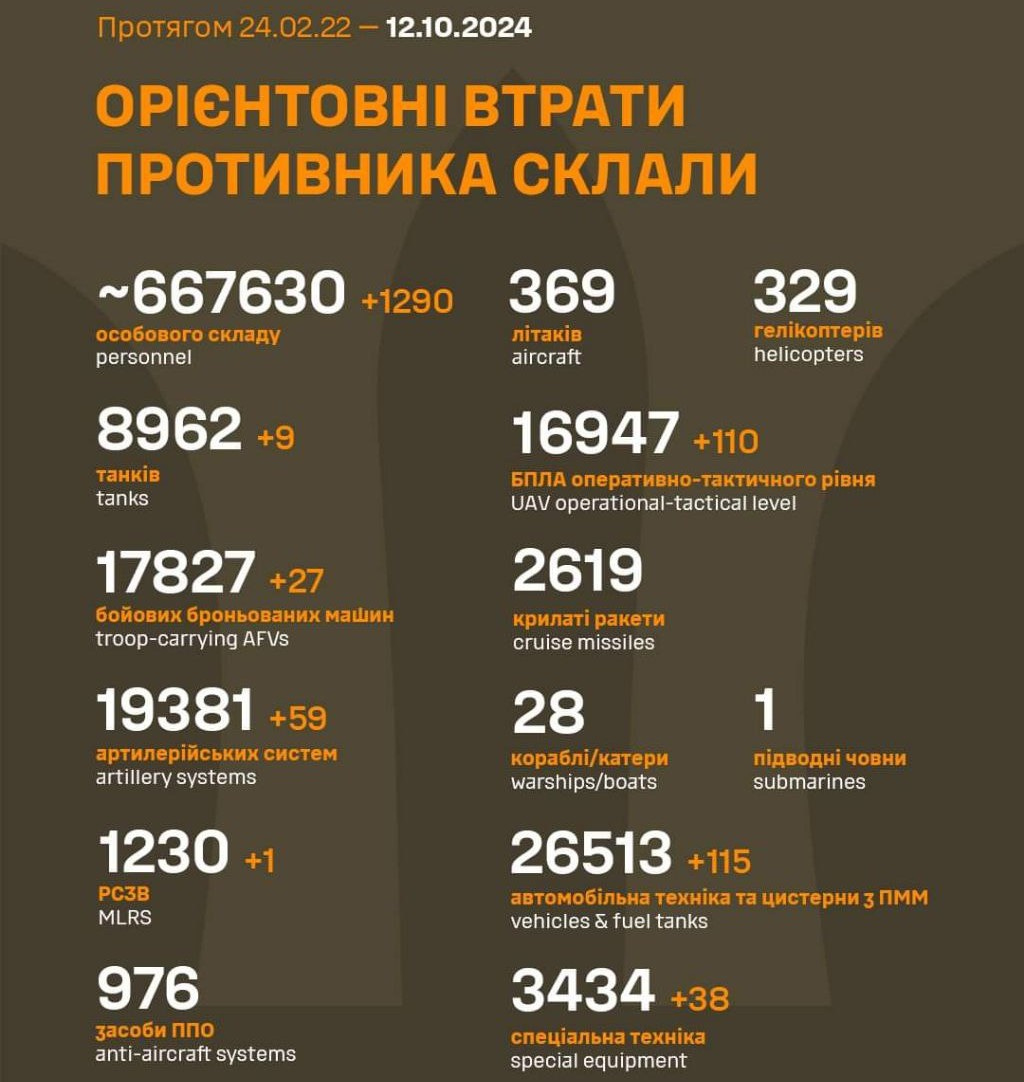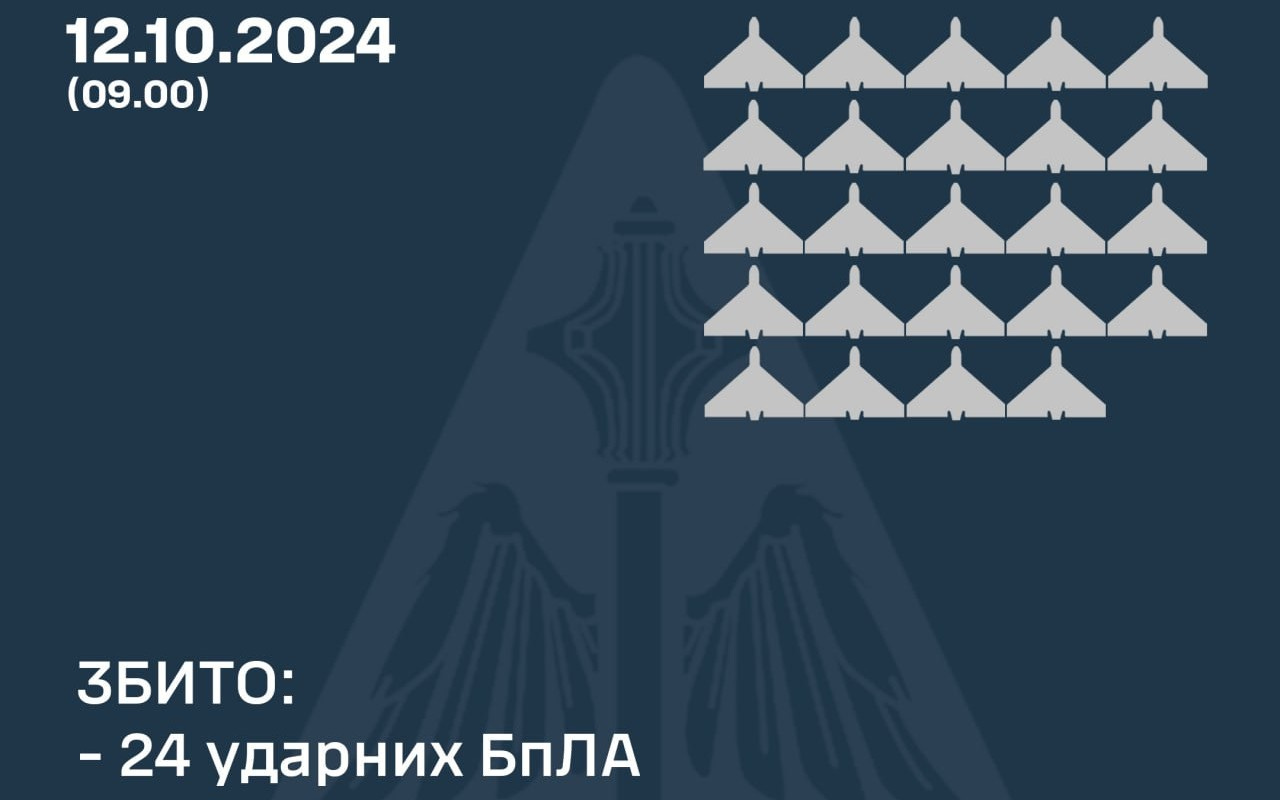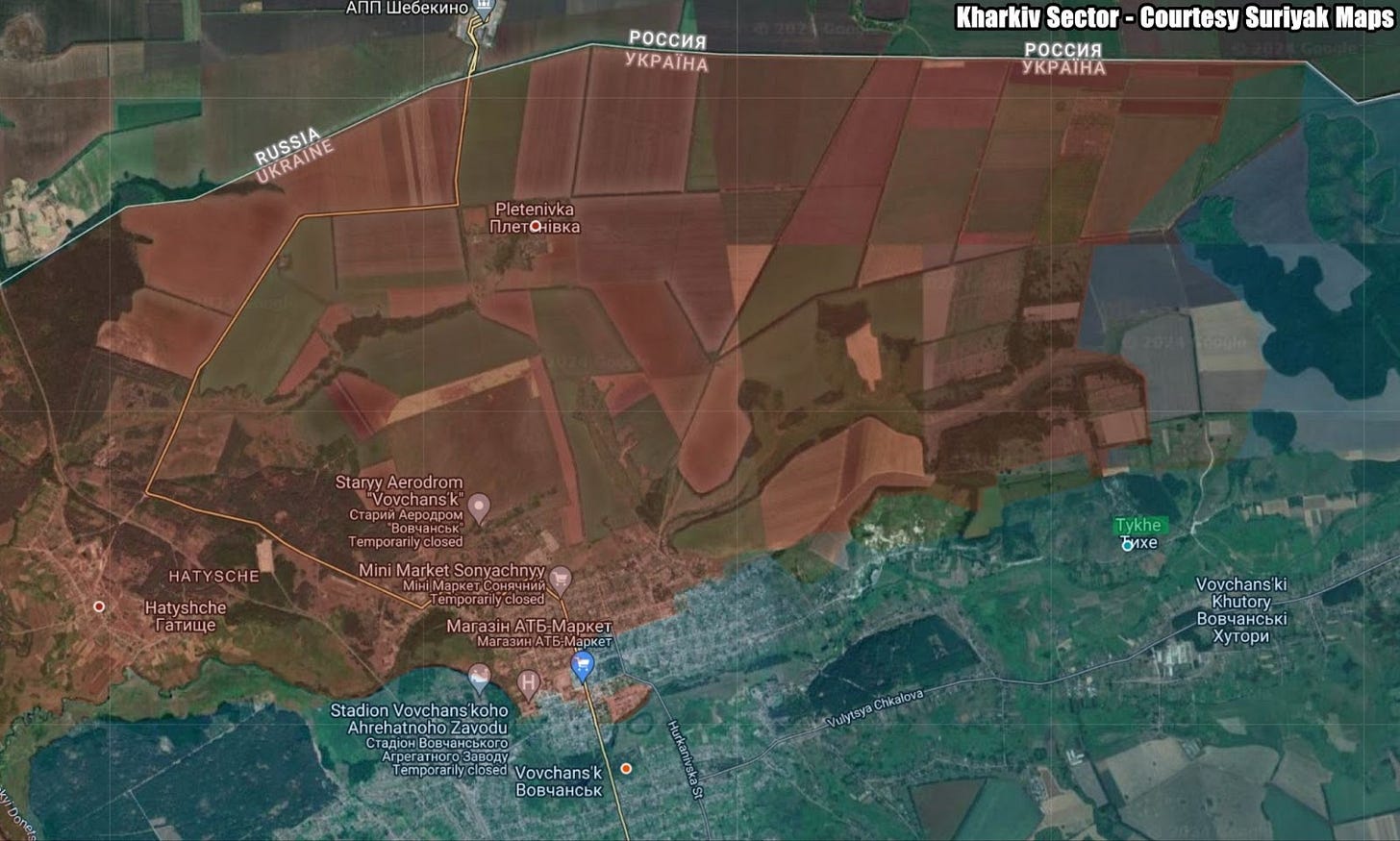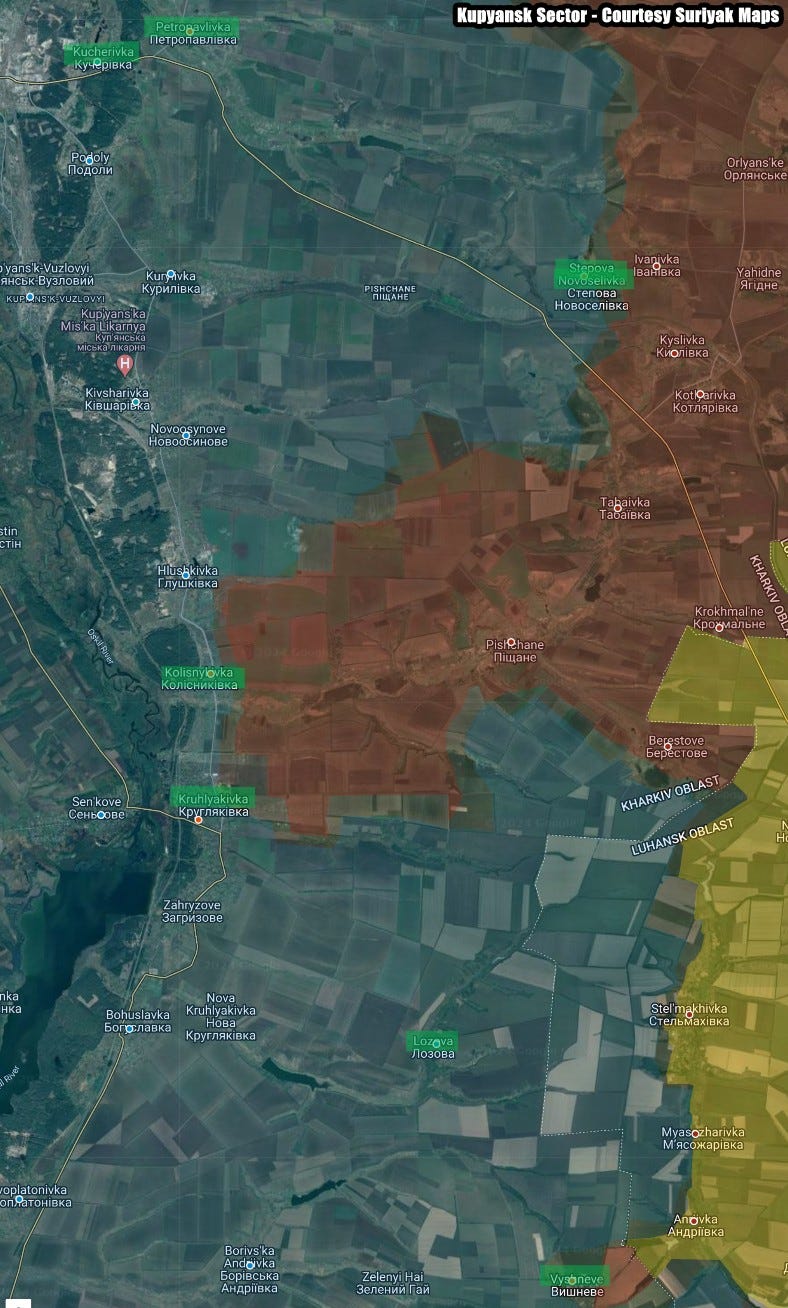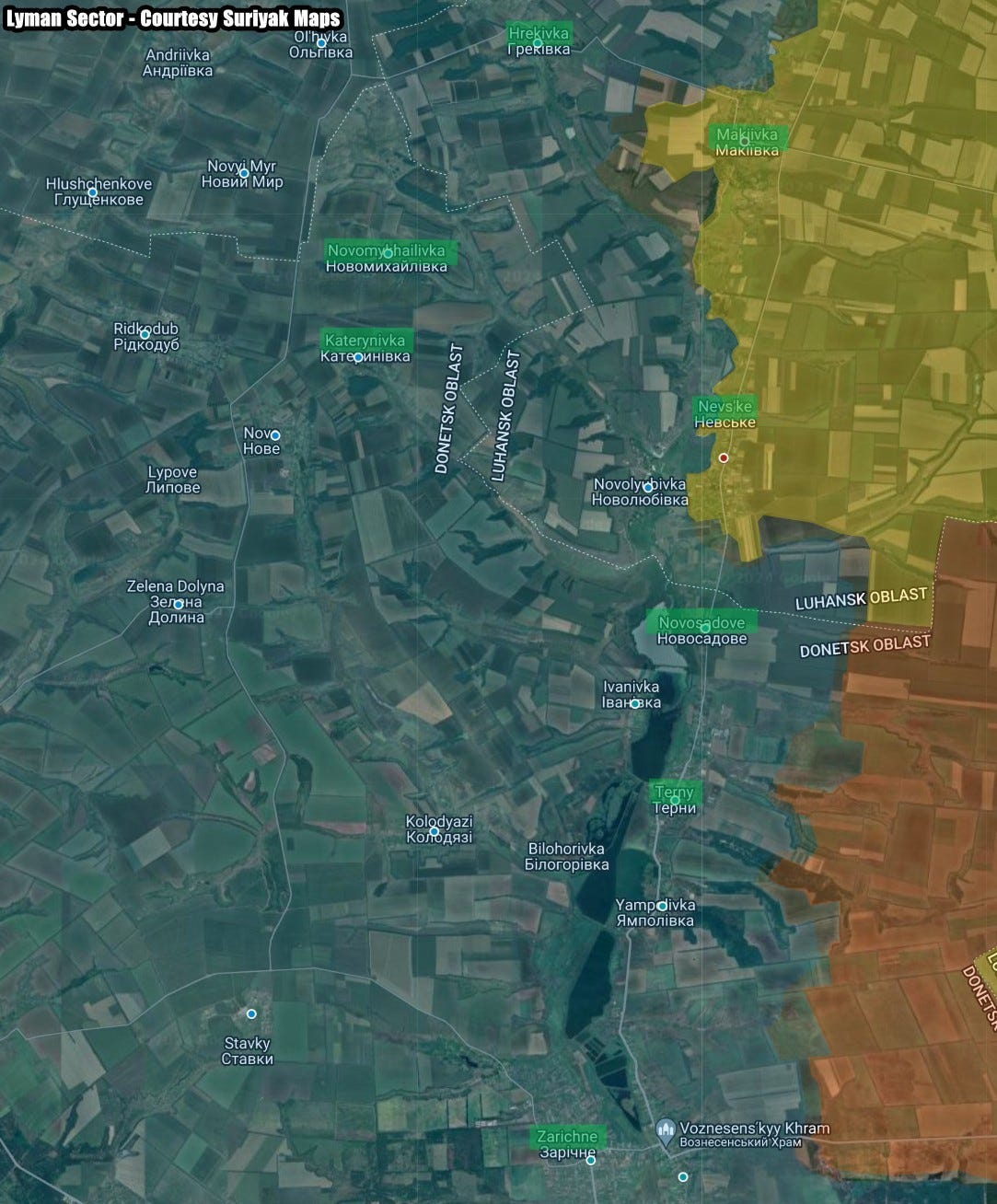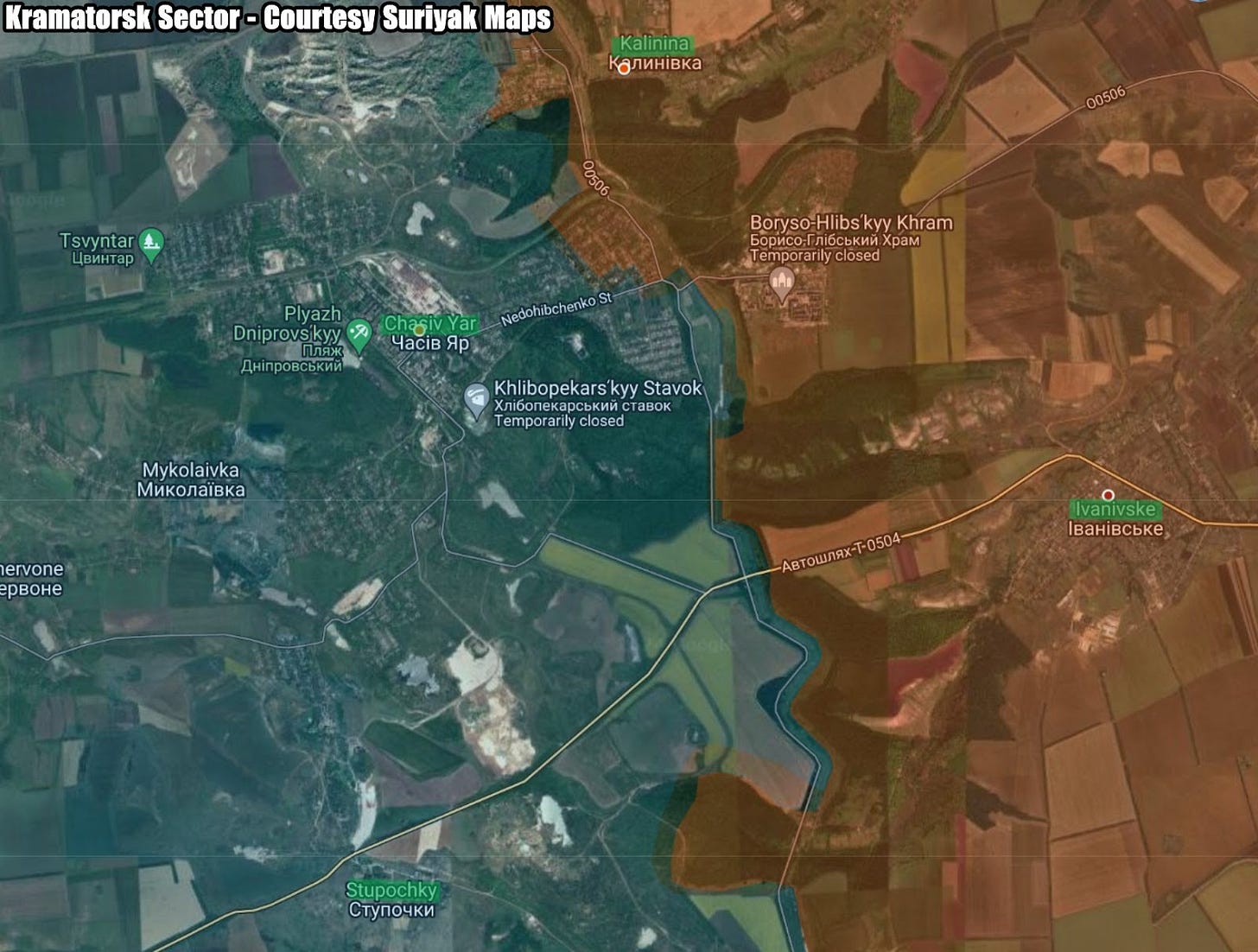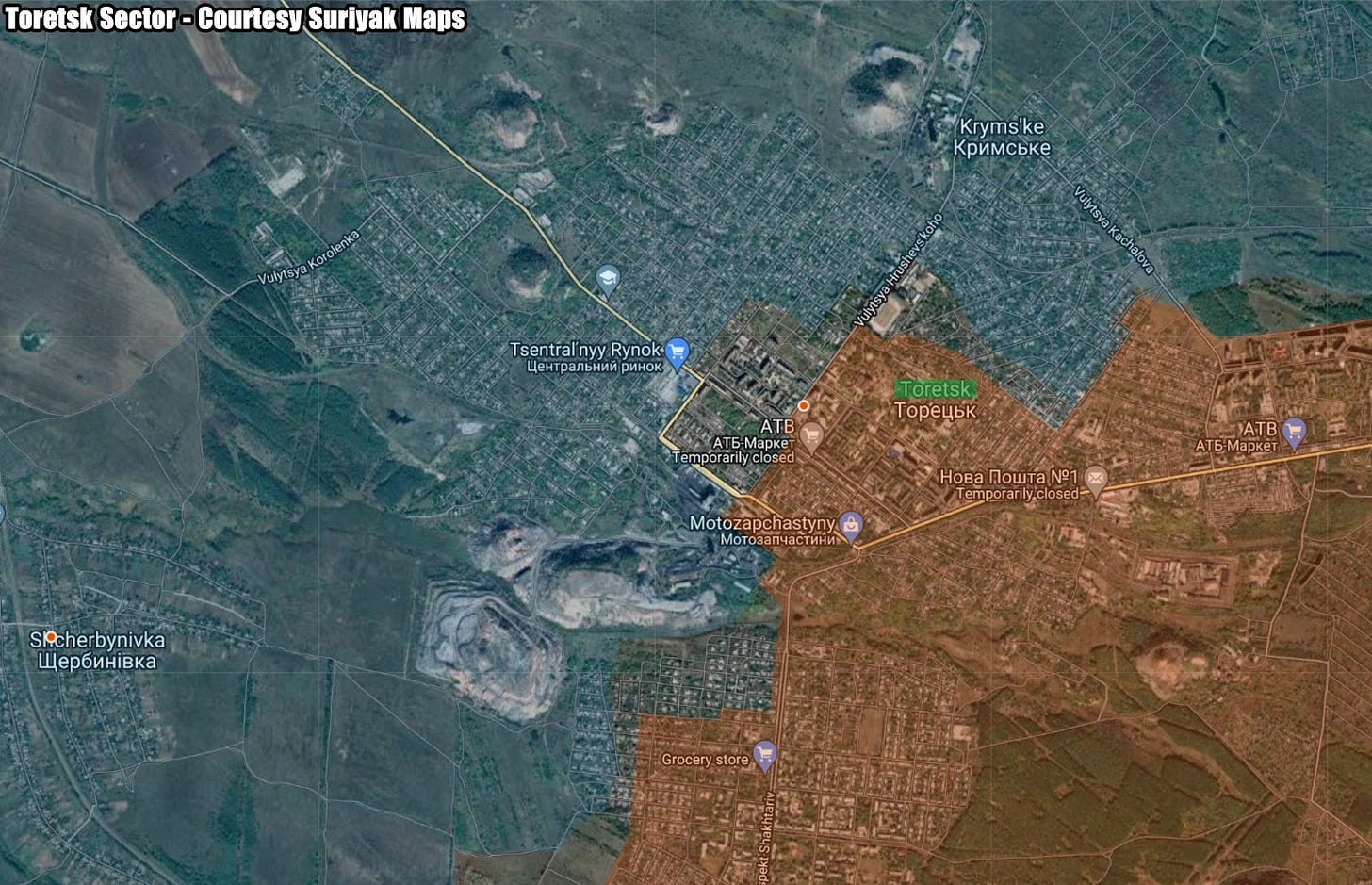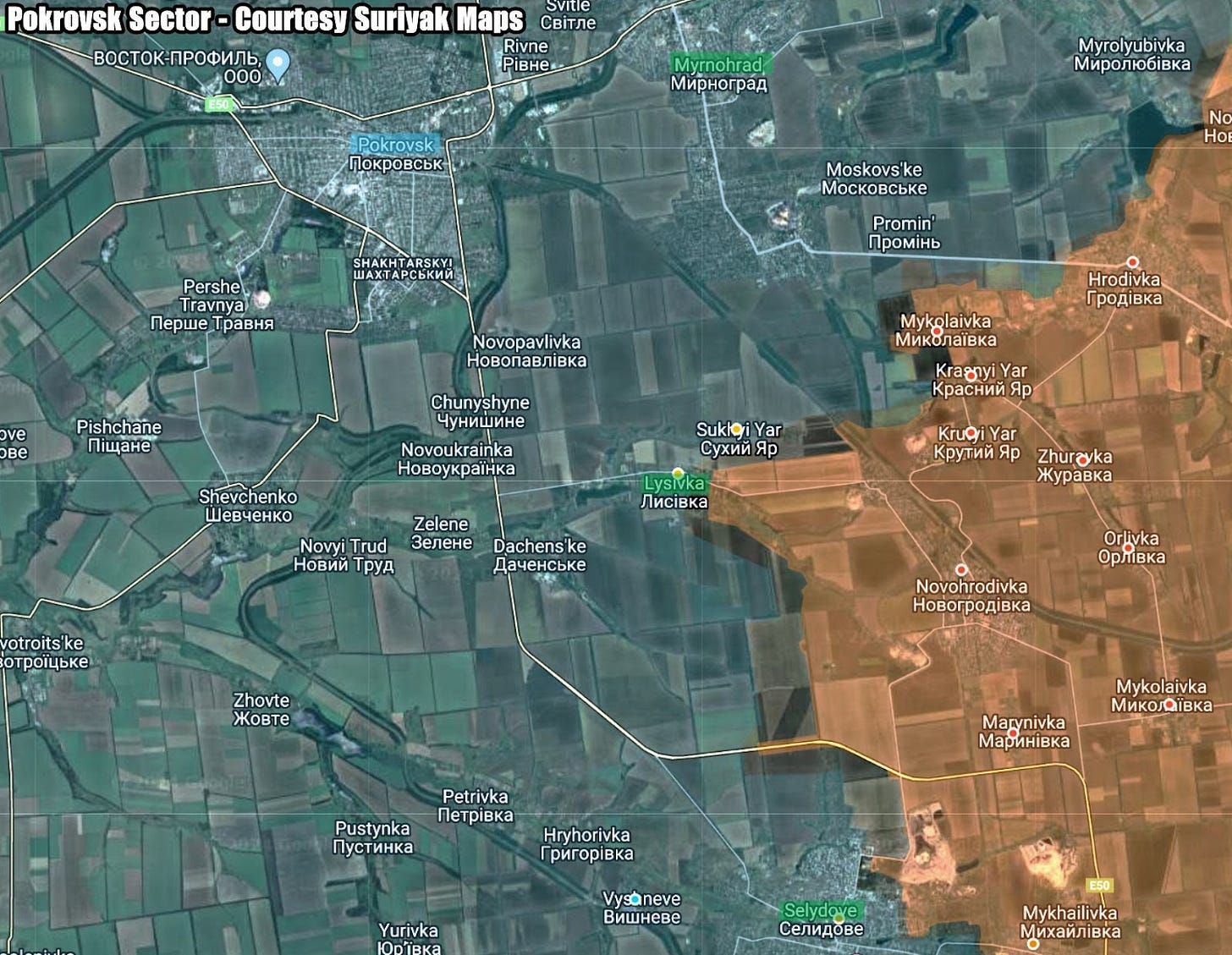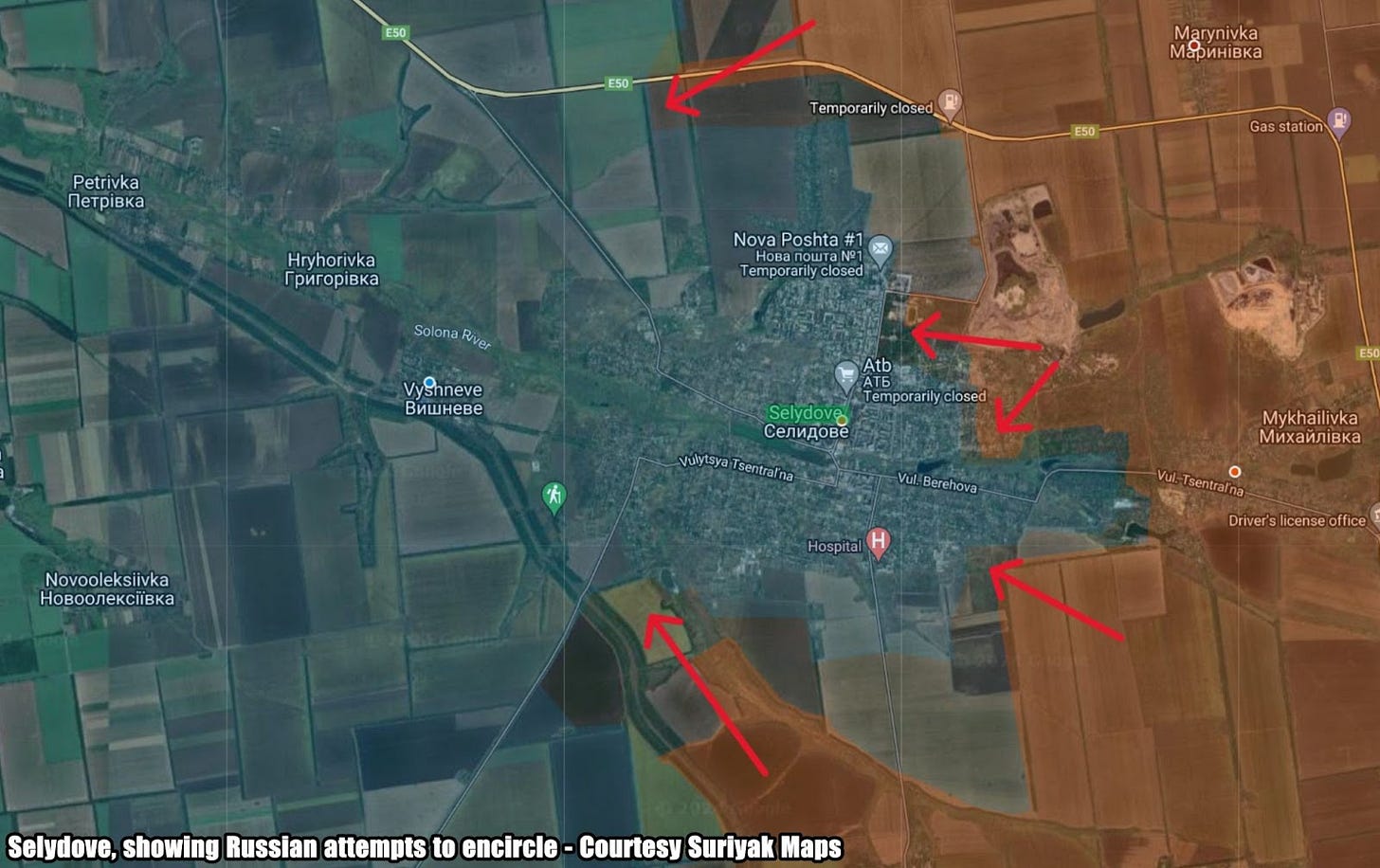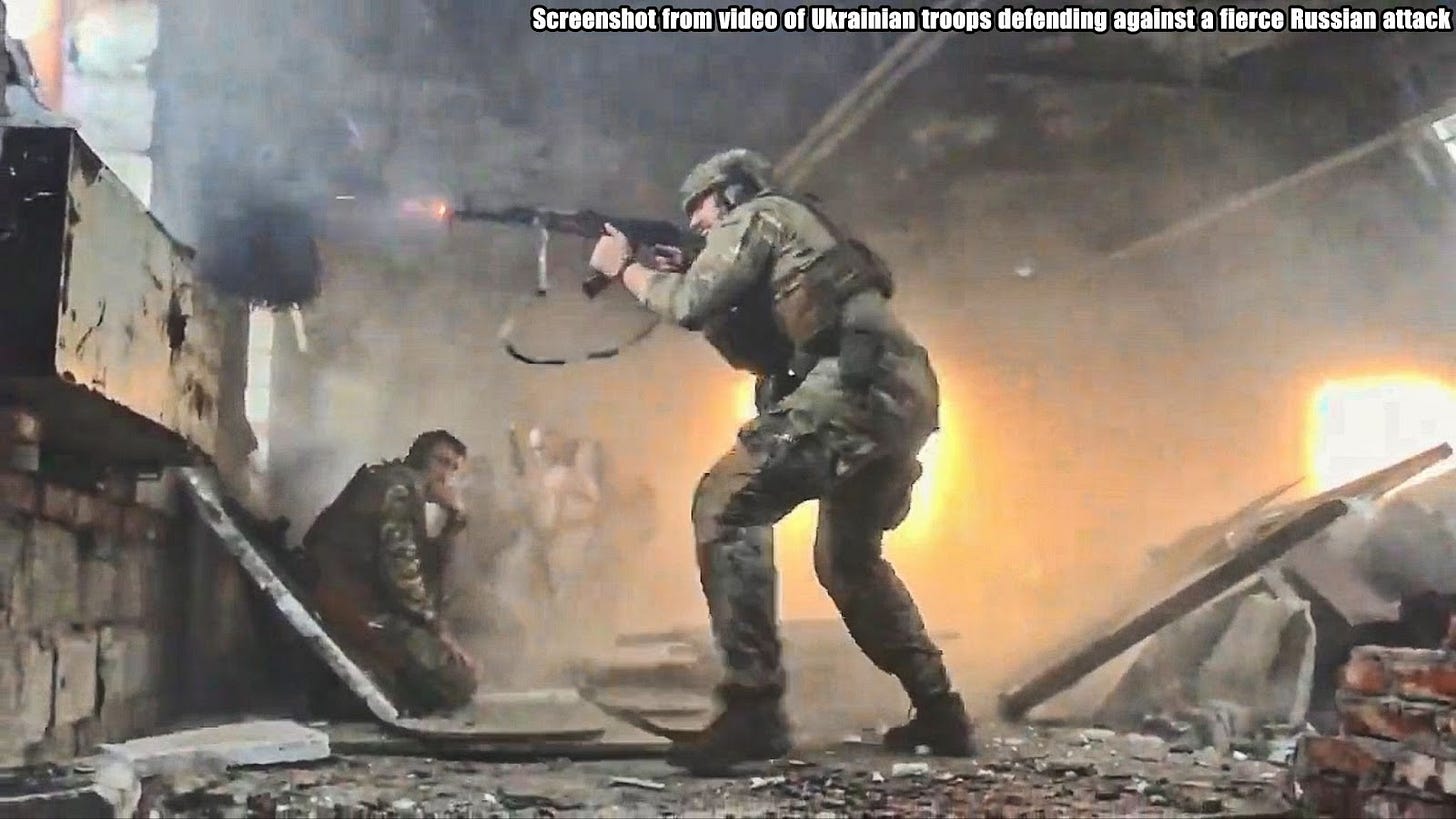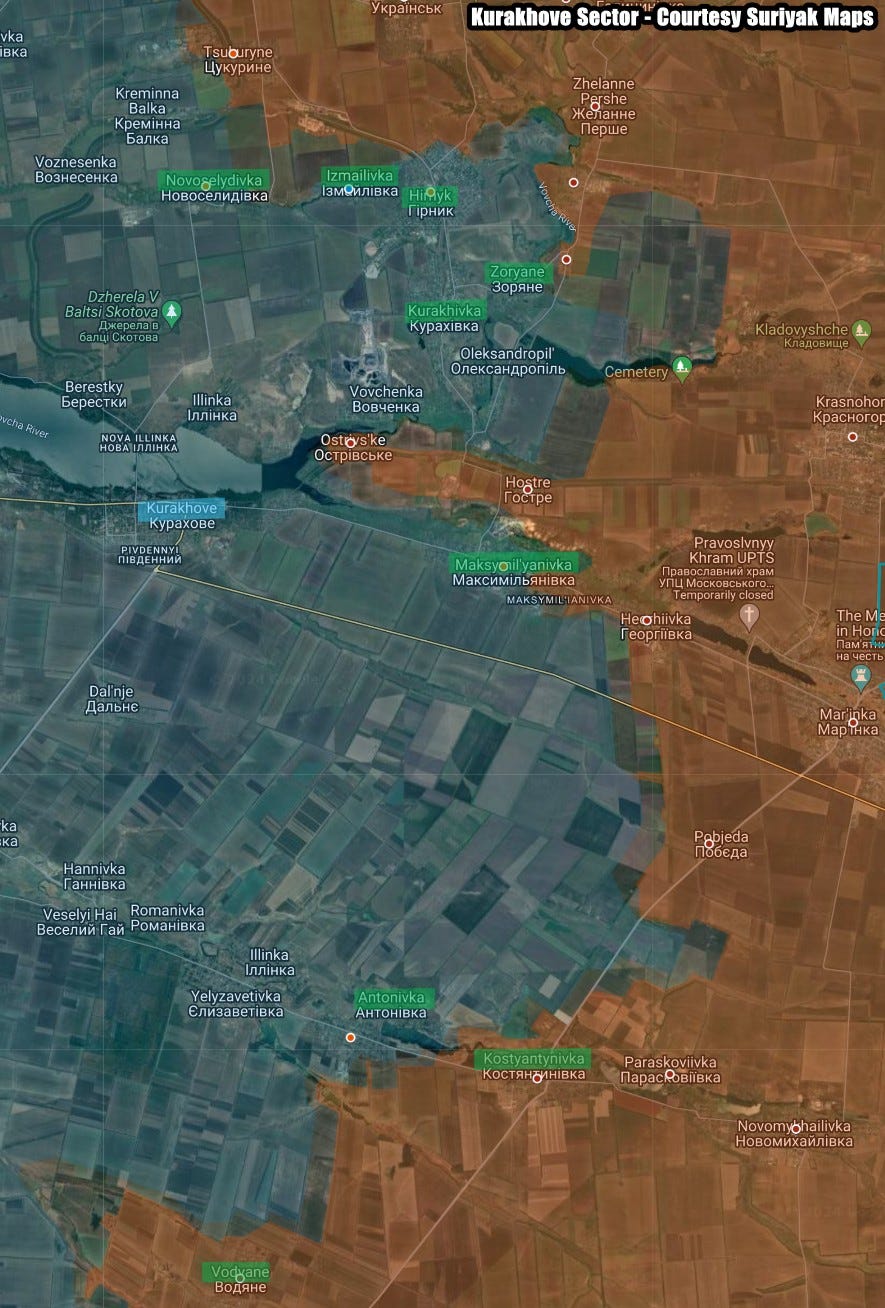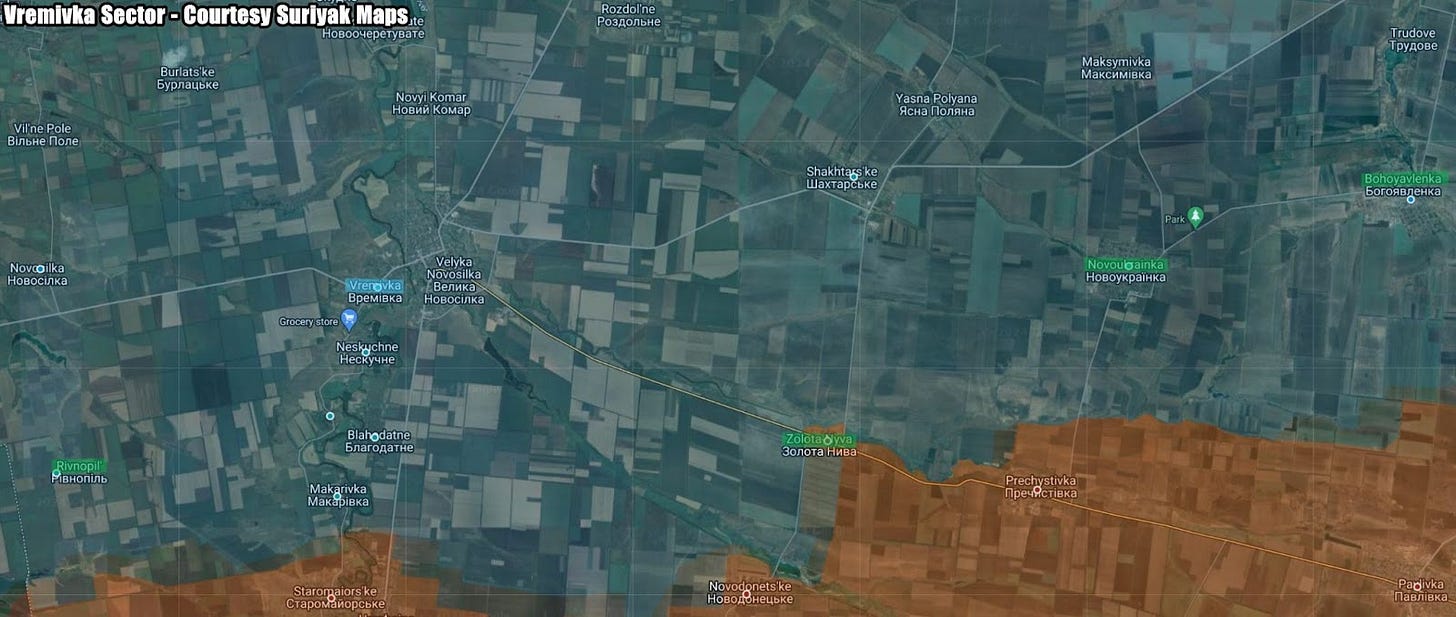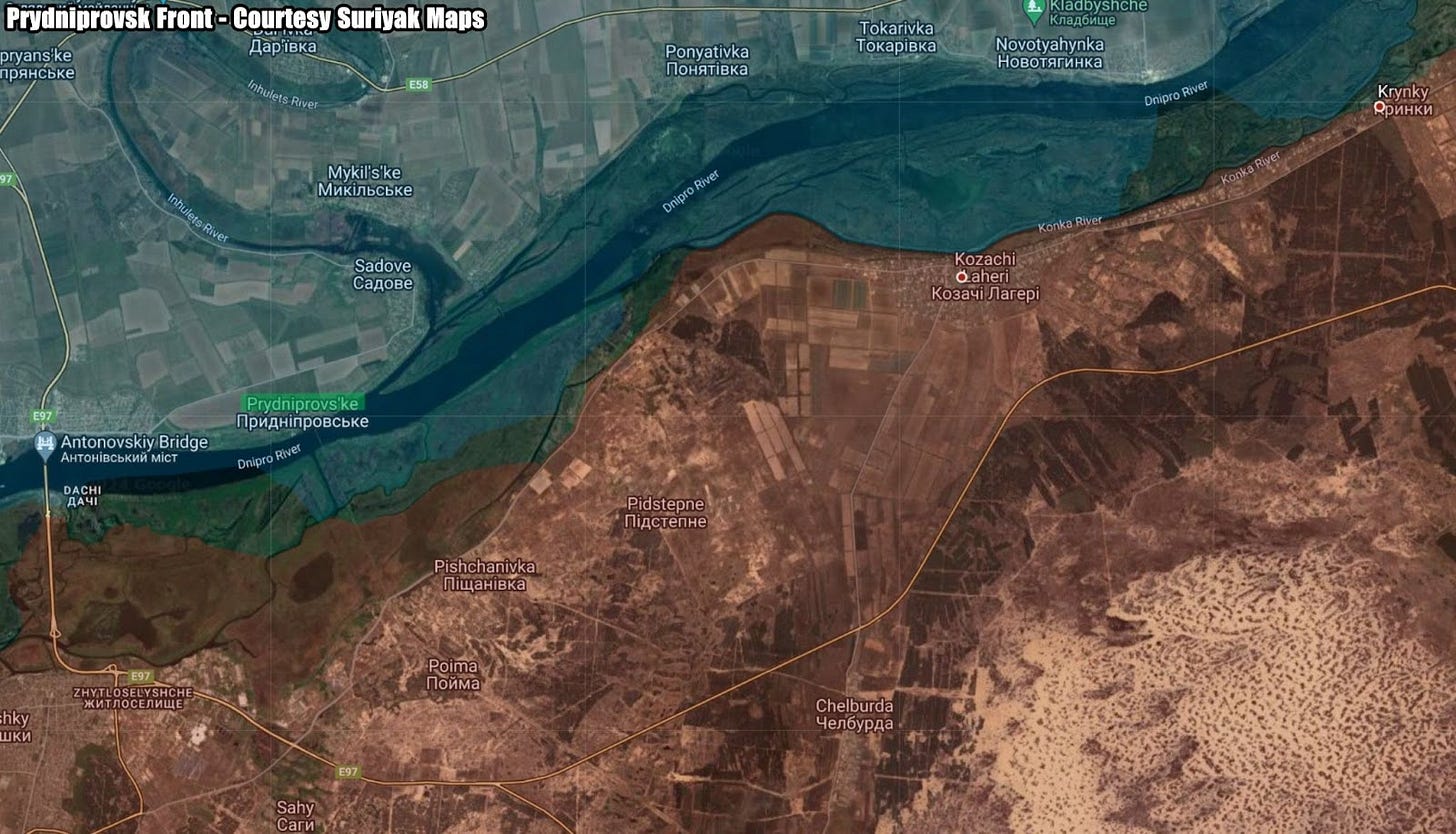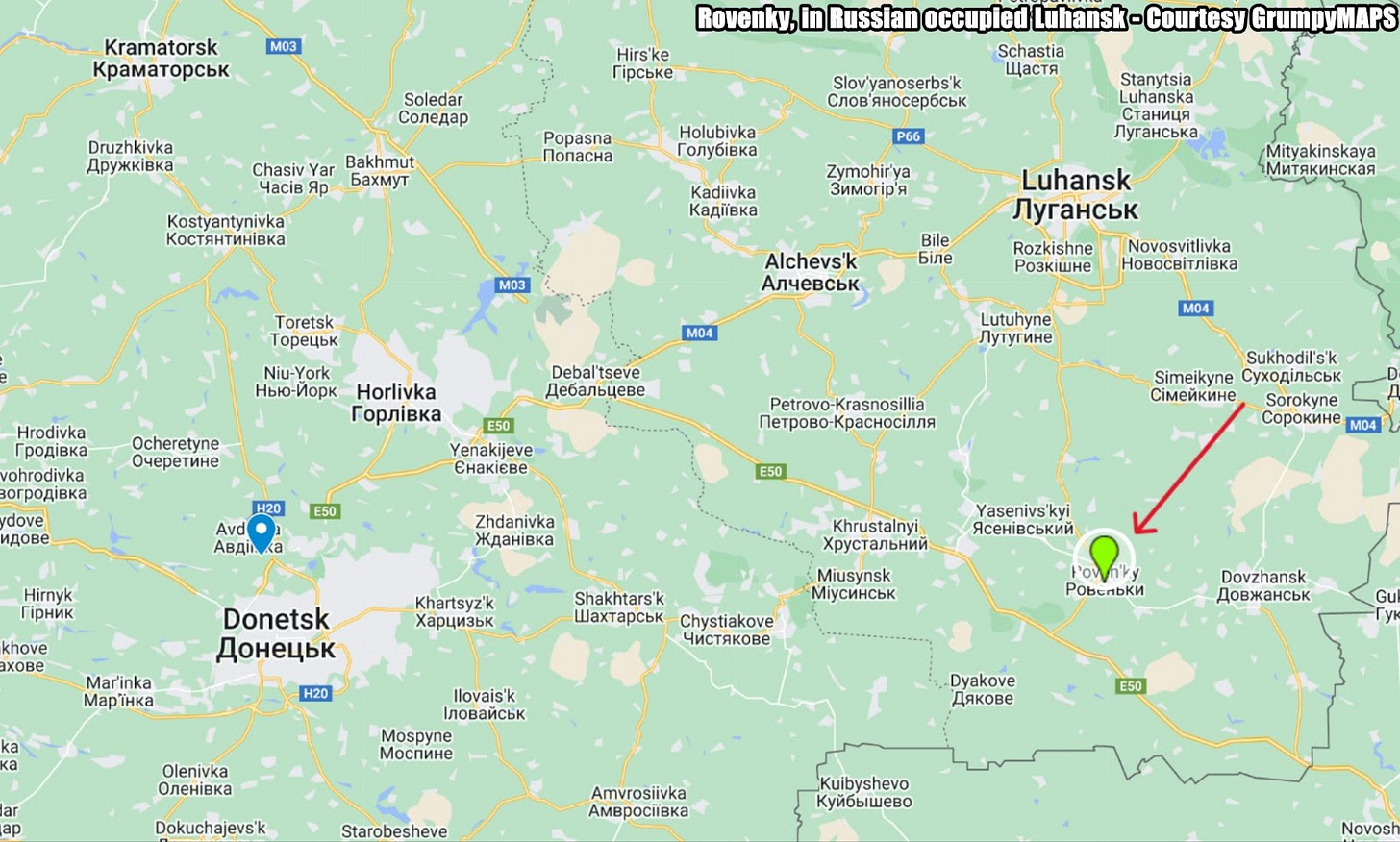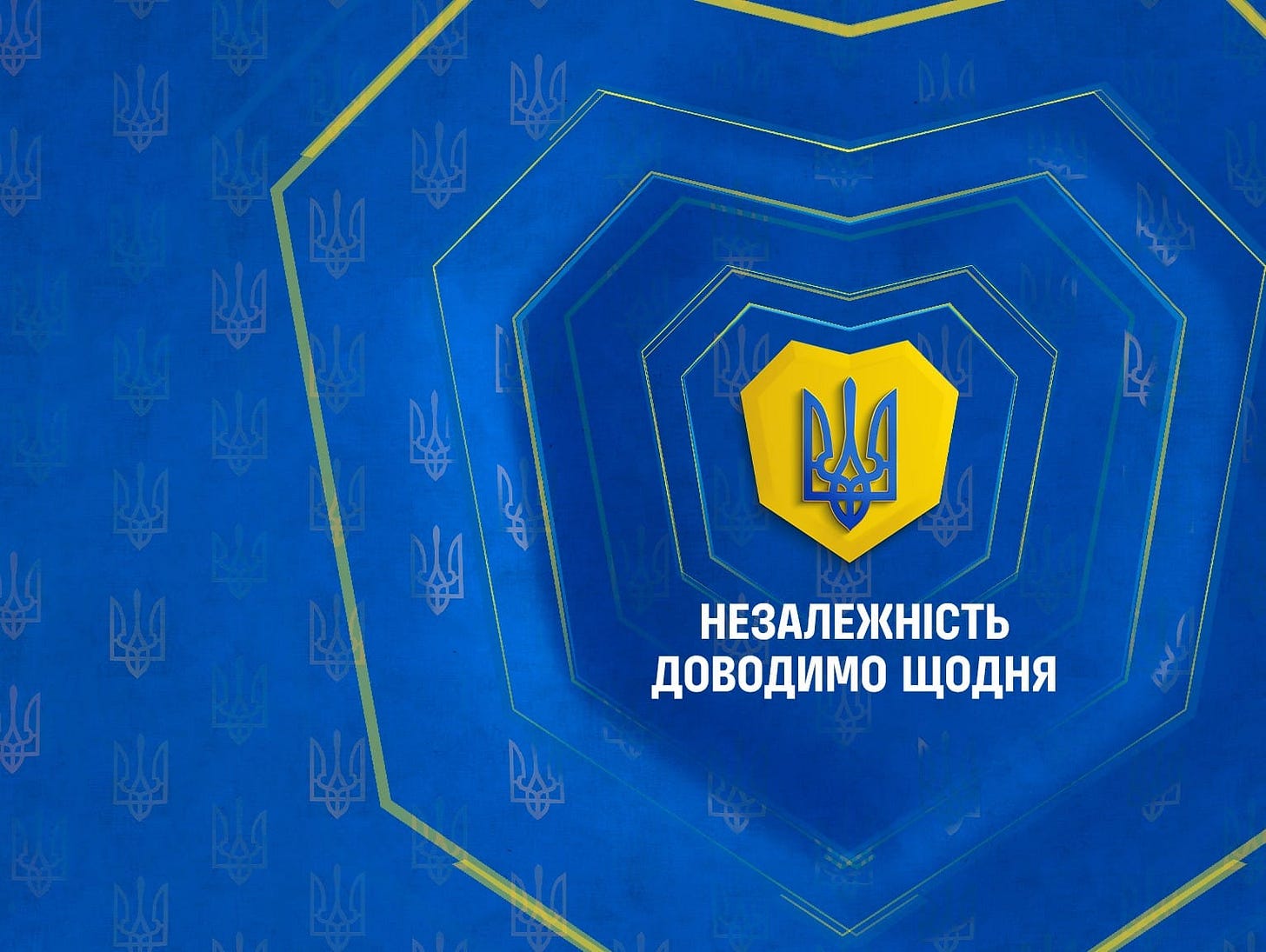Slava Ukraini! In early 2022 I began a Telegram channel aggregating news from a number of sources daily on the war in Ukraine. In June 2023 I began providing a daily draft for the Ukraine War Brief Podcast collecting news from over 70 sources daily, much of which formed the basis of the script. While the Podcast no longer exists I have continued to make this Brief available both on my own Substack and The People’s Media for those who wish to keep up with events on a daily basis.
All the latest news on the Russo-Ukraine War 6 days per week
ALONG THE CONTACT LINE
GSAFU Morning Report
The General Staff of the Armed Forces of Ukraine in its Operational Information update at 22:00 on Oct 11 stated that day 962 of the full-scale invasion of the Russian Federation against Ukraine was about to begin.
During the past day, 146 combat engagements took place. Over the past 24 hours, the enemy carried out 59 air strikes, 602 drone strikes and more than 3,700 artillery strikes across the positions of Ukrainian forces.
At the same time, Ukrainian soldiers continue to inflict losses in manpower and equipment on the occupying troops, exhausting the enemy along the entire front line and continue to disrupt the plans of Russian occupiers to advance deep into the territory of Ukraine.
Air Force Daily Report
On the night of October 12, 2024, the enemy attacked Ukraine with missiles of an unknown type (launch area - Belgorod region - Russian Federation) and 28th strike UAV (launch area - Kursk, Primorsko-Akhtarsk, Russian Federation).
Anti-aircraft missile troops, EW units and mobile fire groups of the Air Force and the Defense Forces of Ukraine were involved in repelling the air attack.
As a result of anti-aircraft combat, 24 enemy UAVs were shot down in the Sumy, Poltava, Dnipropetrovsk, Mykolaiv, and Kherson regions.
As a result of active countermeasures by EW, two enemy drones were lost in location.
The Russian Border Incursion
Russia intensifies efforts in Kursk
The Institute for the Study of War (ISW), a US based think tank, in its Oct 11 Russian Offensive Campaign Assessment assessed that Russian forces intensified their ongoing effort to dislodge Ukrainian forces from Kursk Oblast around the evening of October 10 and have recently advanced further into the main Ukrainian salient in Kursk Oblast while reportedly eliminating almost the entirety of the smaller Ukrainian salient in Glushkovsky Raion. Russian forces reportedly simultaneously intensified counterattacks in Glushkovksy Raion, on the left flank of the main Ukrainian salient in Korenevsky Raion, and on the right flank of the main Ukrainian salient in Sudzhansky Raion on the evening of Oct 10.
Geolocated footage published on Oct 10 indicates that Russian forces recently advanced into central Kremyanoye (east of Korenevo) and to the northern outskirts of Zeleny Shlyakh (southeast of Korenevo) and enveloped Ukrainian positions near Lyubimovka (southeast of Korenevo). Russian milbloggers claimed that Russian forces operating in Korenevsky Raion seized Olgovka (east of Korenevo) and Nizhny Klin (southeast of Korenevo and Lyubimovka), advanced up the outskirts of Tolsty Lug and Novoivanovka (both southeast of Korenevo), and broke through Ukrainian defenses near Lyubimovka during an alleged battalion-sized mechanized assault.
Intensified Russian counterattacks likely aim to push Ukrainian forces out of Kursk Oblast before poor weather conditions in Fall 2024 and early Winter 2024-2025 begin to constrain battlefield maneuver. Ukrainian officials have previously noted that Russian forces are intensifying offensive operations in Ukraine, particularly mechanized offensive operations, to take advantage of dry road and terrain conditions before rainy seasonal weather causes muddy ground conditions. It is likely that this Russian operational calculus also extends to the Russian effort to recapture all of Kursk Oblast, where several Russian sources have reported the start of limited muddy terrain conditions as of Oct 11.
The Khortytsia operational-strategic group
(Responsible for the northeastern part of Ukraine. )
Kharkiv Sector: Over the last day Ukrainian Defense Forces repelled 1 Russian attack near Tykhe.
Kupyansk Sector: Russian Forces carried out 21 offensive actions against Ukrainian defensive positions near Petropavlivka, Kucherivka, Stepova Novoselivka, Kolsynkivka, Kruhlyakivka, Lozova and Vyshneve. 9 engagements continue.
Lyman Sector: Russian Forces carried out 19 offensive actions against Ukrainian defensive positions near Hrekivka, Novomikhailivka, Makiivka, Katerynivka, Nevske, Novosadove, Terny and Zarichine. 7 engagements continue.
Siversk Sector: There has been no significant change in the combat environment in the last 24 hours.
Kramatorsk Sector: Russian forces carried out 5 offensive actions near Kalinina, Chasiv Yar, Ivanivske and Stupochky. 2 engagements continue.
Toretsk Sector: Russian forces carried out 13 offensive actions with air support in the area of Toretsk. The enemy is pressing, trying to advance into the city.
The Tavria operational-strategic group
(Responsible for the central-eastern and southeastern part of Ukraine.)
Pokrovsk Sector : The main efforts of the enemy over the last day focused in this direction. Russian forces conducted 19 attacks against Ukrainian defences mainly in the vicinity of Myrnohrad, Lysivka and Selydove.
Kurakhove - Pokrovsk remains Russia’s main effort
The UK Ministry of Defence in their Oct 11 Intelligence Update on Ukraine stated that The Avdiivka-Pokrovsk sector in eastern Ukraine likely remains the Russian main effort and has seen a high level of Russian operations over the past week. It is highly likely that Russia is continuing to set conditions for an attack on Pokrovsk. Russian forces have partially encircled the outlying town of Selydove and will highly likely attempt to seize the town in the coming weeks.
In the same sector, Russia has made gains into the centre of the town of Toretsk. However, progress has been slow and Russian positions in the town are vulnerable to Ukrainian counter-attacks.
Following the seizure of Vuhledar at the beginning of October 2024.Russian forces have only made minor advances beyond the town, which lies on the intersection between the two key fronts of Zaporizhzhia and Donetsk.
In Zaporizhzhia, there are some indications of an attempted re-invigoration of Russian offensive operations in the eastern part of the sector with Russian forces reportedly taking the village of Kamianske, on the main Zaporizhzhia-Melitopol road. This area has remained relatively static for over a year, but it remains to be seen whether Russian forces will be able to sustain further offensive operations in this area.
Kurakhove Sector: Russian forces conducted 32 attacks against Ukrainian defences in the vicinity of Novoselydivka, Izmailivka, Hirnyk, Zoryane, Kurakhivka, Maksymilyanivka, Konstantinivka, Antonivka and Vodyane. 2 engagements continue.
Vremivka Sector: Russian forces made 8 assaults against Ukrainian positions near Rivnopil, Zolota Nyva, Novoukrainka and Bohoyavlenka. 2 engagements continue.
Orikhiv Sector: There has been no significant change in the combat environment in the last 24 hours.
The Odesa operational-strategic group
(Responsible for Kherson, Qırım, (also known as Crimea) and the Black Sea.)
Prydniprovsk Sector: In this sector, over the last day, Russian forces made 3 unsuccessful attempts to force Ukrainian units from their positions on the left bank of the Dnipro.
TEMPORARILY OCCUPIED TERRITORIES
Another Massive Oil Depot Fire, This Time In Russian-Occupied Luhansk
Ukraine’s forces hit a fuel and lubricants depot near the town of Rovenky in the Russian-occupied area of Luhansk region, in the early morning hours of Oct. 12, according to the General Staff of the Armed Forces.
“Last night, a strike was conducted on a fuel and lubricants storage facility near the town of Rovenky on the temporarily occupied territory in Luhansk region,” the General Staff said. “This base stored oil and petroleum products, which were supplied, among other uses, for the needs of the Russian army.”
A massive fire engulfed a storage tank at the facility located about 60 kilometres south of the city of Luhansk. Impact assessment is ongoing, the General Staff said.
The operation was carried out by Ukraine’s military intelligence HUR in coordination with other Defense Forces components.
Preliminary reports on social media indicate that the fire was caused by strike drones.The same oil depot had previously been targeted by the Ukrainian forces.
On Monday, Oct. 7, Ukrainian drones attacked and set fire to a major oil refinery in Feodosia, Crimea, which burned for four days.
In late summer, Ukraine initiated a bombardment campaign targeting Russia’s oil and gas infrastructure, with some strikes reaching up to 700 kilometres deep inside Russian territory.
THE HOME FRONT
Russian attacks kill 3, injure at least 14 people in Ukraine over past day
Russia carried out mass attacks across Ukraine’s southern and eastern regions killing at least three civilians and wounding 14 in the last 24 hours, Ukrainian officials reported on Oct. 12. The Kyiv Independent reports.
In Donestk Oblast, Russian troops launched strikes on the village of Bohoiavlenka, near the recently fallen town of Vuhledar, killing two civilians, reported the Donest Oblast Military Administration. Russian forces also struck the village of Ivanopillia, close to the ongoing battle around Chasiv Yar, killing one civilian. In total, eight people were injured.
In Zaporizhzhia Oblast, Russian forces launched 425 strikes across 11 localities on Oct. 11, according to Zaporizhzhia Oblast Military Administration Head Ivan Fedorov. Overnight attacks on the city of Zaporizhzhia hit residential buildings and businesses, injuring three people including a young girl.
In Kherson Oblast, shelling injured three people and damaged houses, infrastructure, and businesses, according to Kherson City Military Administration Head Roman Marchenko. A huge fire broke out overnight after shelling at a warehouse and waste production storage site in the city of Kherson, which firefighters managed to extinguish by the morning of Oct. 12, Ukraine’s emergency services reported.
RUSSIAN WORLD
Russia hikes “Exit Tax” for foreign companies
Russia has raised the so-called “exit tax” and the minimum discount for foreign companies seeking to pull out of the country, the RBC news website reported Thursday, citing three anonymous sources familiar with the new rules and one lawyer.
Russia has since December 2022 forced foreign companies to sell their assets to Russian buyers at steep discounts and charged them an exit fee of the transaction value. The percentage figures have been gradually revised upwards, while foreign companies remaining in Russia have faced criticism that their exits would help fund Russia’s invasion of Ukraine.
“Voluntary contributions” to the Russian treasury would be raised from 15% to 35% under the new rules, according to RBC.
The newspaper added that the first 25% is payable within the first month after the deal, 5% within a year and the last 5% within two years.
Reuters said it confirmed the figures with another anonymous source involved in Russian mergers and acquisitions.
RBC reported that the foreign companies’ Russian assets would now be sold at a discount of 60% instead of the previous 50%.
Grumpy here - This is a tax on greed and affects only those international corporations (i.e. Unilever) who refused to leave Russia earlier hoping to ride out the war and continue to make money.
NEWS WORLDWIDE
Close to a third of sanctioned tankers are back to transporting Russian oil
Nearly a third of the tankers sanctioned by the U.S., UK, or EU last year for transporting Russian oil have returned to service, according to a Bloomberg report released on Oct 10. At least 21 out of 72 blacklisted tankers have collectively loaded cargoes of Russian oil 24 times, as per the publication.
The pace of these tankers returning to operation appears to be increasing. Ship tracking data compiled by Bloomberg reveals that from Oct. 1 to 10, at least seven sanctioned tankers loaded Russian oil, marking an increase compared to prior months — up from six tankers in both August and September, and only five in total from the start of April through the end of July.
At first, the sanctioned tankers remained idle, with none transporting Russian or any other oil until April — six months after the initial sanctions were imposed. However, following the first successful deliveries, the use of these sanctioned tankers has surged.
The first sanctions were imposed by the U.S. on Oct. 12, 2023, targeting two vessels, SCF Primorye and Yasa Golden Bosphorus, for transporting Russian oil sold above the $60-per-barrel price cap put in place to limit Moscow’s oil revenues. The UK began blacklisting individual vessels in June 2024, followed by the EU later that month. A total of 73 ships were named in total, with one tanker, the Yasa Golden Bosphorus, removed from the U.S. sanctions list in April 2024.
Bloomberg notes that the majority of crude shipments have been directed to Chinese ports, while roughly one-third have arrived in India, indicating that New Delhi's earlier hesitance to engage with sanctioned entities may be a thing of the past.
An investigation by The Insider released on Sept. 24 identified one of the key players enabling the operation of Russia’s so-called “shadow fleet”: Latvian citizen Aleksejs Haļavins. Two entities affiliated with the businessman are known to have purchased oil from Russian oil company Surgutneftegaz at a price above the cap, bringing the Russian corporation an additional $1.4 billion in revenue. Other companies linked with Haļavins operated tankers carrying oil from Russia to India and China.
A recent study from the environmental NGO Greenpeace warned that the “shadow fleet” carrying Russian crude oil substantially raises the risk of a major spill in the Baltic Sea, with the German cities of Rostock, Lübeck, and Kiel particularly vulnerable.
Despite sanctions, Russia managed to import more than 300 machine tools for defence companies from Germany
Despite the sanctions, Russia managed to import more than 300 machine tools for the production of weapons and artillery ammunition from Germany. Tagesschau reported citing a study by Südwestrundfunk.
According to their research, in 2023, Russia managed to import more than 300 industrial machines that can be used to produce military equipment, ammunition, guns, etc.
In total, products from more than 30 German manufacturers were imported and shipped to Russia through the intermediary countries, most of them through Turkey.
According to the publication, the modern CNC machines are used by companies such as Parsec, Kamaz, NIR, and Industrial Solutions, which manufacture the military products, including engine components and spare parts for aircraft and missiles.
The study of documents also confirms that most of the companies whose products end up in Russia are located in Baden-Württemberg, a traditional centre of mechanical engineering in Germany.
Additionally, SWR’s research indicates that some of the Turkish intermediaries involved have direct ties to Russia, and some were even founded by the Russian entrepreneurs.
Despite the attempts by the individual companies to limit the export of their own goods to Russia, most efforts are futile, as it is difficult to fully control the product’s path, and in some cases impossible.
Given the difficulty of tracking, it is impossible to stop the supply of the modern CNC machines to Russia, which is still happening, with a possible increase in supplies of both German and Japanese machines in 2024.
CNC equipment is needed for high-precision and high-speed metal processing. The machines purchased by the Moscow-based AMG were used by the Kometa Corporation, which develops missile systems.
MILITARY & TECH
Russia Halts Production of Su-57 Stealth Fighters
In what amounts to a stunning admission of failure, Russia has stalled the production of the fifth-generation Su-57 fighter jet (Nato reporting name Felon), which was touted as a "response" to the American Lockheed Martin F-22 Raptor. The Telegraph’s David Axe reports.
Russia remains heavily reliant on Western components, especially electronics. However, sanctions imposed in 2022 have blocked access to this crucial supply, Axe reports.
“It’s evident that Russia’s military industry remains heavily reliant on Western components, especially electronics,” explained Frontelligence Insight, a Ukrainian analysis group.
Sanctions imposed by Western governments in the 31 months since Russia expanded its war on Ukraine have severely restricted the supply of this crucial hardware. Consequently, “production of the Su-57 is now at risk,” Frontelligence Insight concluded.
As the publication notes, the Su-57 is a large, fast fighter with radar-evading capabilities, designed as Russia's counterpart to the U.S. Lockheed Martin F-22 Raptor. It is intended to replace aging Mikoyan MiG-29s and Sukhoi Su-27s, along with their variants, in Russian air force service.
The Su-57 had its maiden flight in 2010, two decades after the Raptor, the world’s first fifth-generation stealth fighter. Over the next decade, Sukhoi’s workers manually assembled 10 test models. In 2019, the Kremlin signed a contract for 76 production jets, reportedly at a cost of around $50 million per unit.
The Russian firm delivered the first 10 production Su-57s to the air force in 2022 and another 11 in 2023. So far this year, Sukhoi reportedly has handed over just a few additional planes.
And in the meantime, the Russian air force has lost two Su-57s – one test model and a production jet – to crashes. A Ukrainian drone strike on Russia's Akhtubinsk State Flight Test Center in southern russia in June destroyed at least one additional Su-57 on the ground.
Fourteen years after its first flight, there are just over 30 Su-57s in Russia's inventory, with a third being test models possibly lacking key electronics. This is a meagre force for an air fleet of around 1,000 fighters, especially since 100 have been lost over Ukraine since 2022. The delivery rate for new Su-57s has slowed between 2023 and 2024, contrary to typical trends of increased production.
Where once Sukhoi could legally import MPPU-50s and parts for MPPU-50s, now it must acquire them illicitly from third parties. “Considering that Russian military production continued to expand in 2023 and 2024, it’s clear that they find ways to smuggle key components or purchase Chinese replacements to maintain production,” Frontelligence Insight noted.
Grumpy Here - The SU-57 was always a pipe dream, a conventional aircraft meant to look like a modern stealth aircraft. As one expert recently referred to it “A reskinned SU-27 that would have been cutting edge in 1985”.
The Russian Federation is a pale image of the former Soviet Union, it does not possess the capabilities to manufacture a modern stealth fighter, neither having the engineering skills or the capabilities to manufacture key electronic components.
That’s it for today’s Draft folks if you would like to keep up with events in Ukraine daily please consider subscribing, its free!
Feel free to share this update with your friends. Heroyam Slava!







